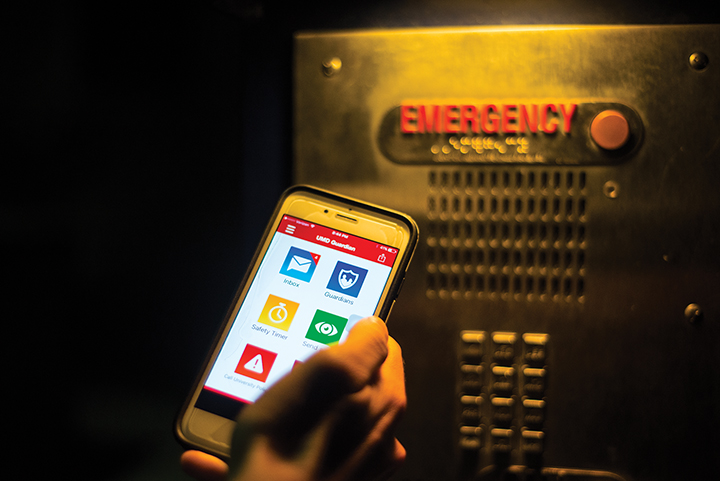People in Maryland will soon be able to contact 911 via text message, a measure that is expected to benefit people with hearing or speech disabilities and anyone in a situation where speaking aloud could be dangerous.
The state Board of Public Works voted Feb. 21 to approve a $2.4 million contract for the program, which is expected to begin development in March, said Gerard Shields, a spokesman for the Maryland Department of Public Safety and Correctional Services. The contractor for the program is TeleCommunications Systems Inc. of Annapolis.
The program is expected to be up and running throughout the entire state in about three months, Shields said. About one-third of counties nationwide currently have the technology, according to the National Emergency Number Association.
[Read more: UMD will spend $185,000 to allow “equal access for its deaf fans” in lawsuit settlement]
“I think it will absolutely save lives,” said David Mitchell, University of Maryland Police Chief. “What most of us carry either in our pockets or on our hips or somewhere within reach — that can be turned into a personal safety device.”
He added that this university’s safety app, UMD Guardian, already offers the option for students to send texts to University Police.
If someone were to text 911 from this campus, Mitchell said, the information would be sent to Prince George’s County Police rather than to University Police. Although he said response times for on-campus emergencies will be fastest if University Police are notified, Mitchell recommended using both modes of contact in the event of an emergency.
A pilot version of the text-to-911 system has been in place in Frederick County since 2015, Shields said. So far, only about three dozen of the 8,000 contacts to emergency responders that the county receives every month have come in the form of texts, he added.
The state chose Frederick County for the pilot program because of its high volume of deaf residents, and because the Maryland School for the Deaf is located there, Shields said.
There are approximately 1.2 million Maryland residents over the age of 12 who are deaf or partially deaf in at least one ear, according to the Governor’s Office of the Deaf and Hard of Hearing. Frederick County has the largest percentage of deaf and partially deaf business owners of any county in the state, at 35 percent, according to the governor’s office’s 2016 annual report.
The system will not yet support messages that are longer than 160 characters or contain pictures or videos, Shields said, though he expects the technology for this will be developed within a few years.
There was strong support from the deaf, partially deaf and speech-impaired communities for the idea, Shields said, adding that the technology is also expected to help people who find themselves in a situation where it is safer to stay quiet.
He said this issue has been especially prominent in the wake of the recent mass shooting in Parkland, Florida, where 17 people were killed and many students were forced to hide. Some saw this as an example of a situation in which victims could benefit from being able to ask for help silently.
“In one of those school kind of situations, someone could text to the emergency operation,” Shields said, adding that he believes the technology “is moving us into the 21st century.”
Julianna Burns, a freshman biology major, said she thinks the development is “a big jump from where we were,” adding that it could make a big difference in active shooter situations or to friends she has in the deaf community.
“I know people who are deaf, and when they have emergencies, they’re out of luck,” she said. “They have to text someone to call for 911.”
Burns added that the option is also helpful in situations where speaking is out of the question, for which being able to send a text to 911 is a convenient option.
“It makes me feel a lot safer,” she said. “I know there’s certain times it’s either quicker or easier to just send a text, so I think it helps out a lot.”
[Read more: UMD Police are using simulation training to prepare for active shooter situations]
Lexi Carroll, a sophomore English major, agreed.
“It’s something that I was thinking about [and] surprised that we didn’t have already,” she said. “In the world that we live in, it’s way easier to just send a text … it’s really hard to make a call. So I think it’s a good use of resources.”
Shields said that for now, his recommendation to the public is to “call if you can, text if you must,” because people who send a text will have to manually inform responders of where they are, whereas traditional 911 calls can be traced to the location of an emergency using machines.
“I hope other states will look at [this] in terms of how Maryland is saving lives,” Mitchell said, “and that this program will be implemented throughout all 50 states.”



